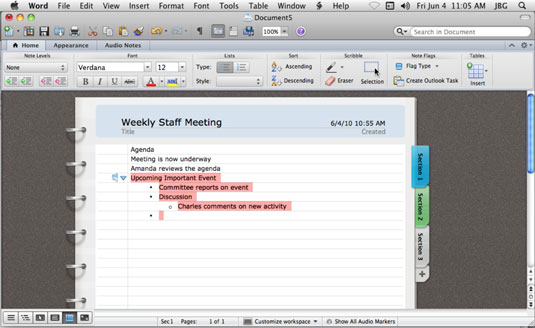Microsoft Office 2011 Mac For Dummies Pdf
Microsoft Office 2011 Mac Price

Sweet Tips for Office 2011 For Mac Users The first Microsoft Office tip deals with something we all do a lot: selecting text in documents. The second tip shows you how to supercharge Undo and Redo. And my last tip is a reminder to use the always-available contextual menu.
• Hold down the Shift key to extend the selection contiguously; hold down the Command key to select non-contiguous words/sentences/paragraphs/cells/rows/columns. • All of the Office applications have virtually unlimited Undos (shortcut: Command+Z) and Redos (shortcut: Command+Y). That’s cool but the Undo and Redo icons in the Standard Toolbar of all of the applications (except Outlook) have pop-down menus that list all of the actions you can undo or redo. • Don’t forget the contextual menu, available by right (or Control) clicking on a word, cell, document, object, or almost anything else in a document. It usually contains commands that are only useful in the context of what you right (or Control) clicked, and can save you time and effort. Where Do I Find It in Office 2011 For Mac?
Office 2011 for Mac All-in-One For Dummies. Book Description The 2011 version of the Microsoft Office productivity suite for the Mac sports major changes from what Mac users are accustomed to. This soup-to-nuts guide gets the Mac crowd up to date quickly and easily. Office 2011 for Mac All-in-One For Dummies Pdf mediafire.com, rapidgator.net, 4shared.com, uploading.com, uploaded.net Download Note: If you're looking for a free download links of Office 2011 for Mac All-in-One For Dummies Pdf, epub, docx and torrent then this site is not for you.
There are a handful of Microsoft Office actions, items, and commands most people seem to use frequently. So here’s where you’ll find Clip Art, Symbols, the AutoCorrect on/off switch, and application Preferences for all Office apps: • Clip Art: Office includes a tasty selection of clip art images; launch the Clip Art Gallery by choosing Insert, Clip Art, Clip Art Gallery or launch the Clip Art Browser by choosing Insert, Clip Art, Clip Art Browser. • Symbols (such as: ©, ®, ™, , ✓, ÷, or €): Choose View, Object Palette and click the Symbol tab (third from the left).
Would you like to synchronise your Posteo address book with Outlook 2016 on your computer? Downloading and installing Outlook CalDav Synchronizer Outlook CalDav Synchronizer can be found on the. In this help article you will find out how to synchronise your address book with the help of the open source add-on, Outlook CalDav Synchronizer. On a Windows PC, all you will need is an add-on – on a Mac you can use the. How to add all contacts to outlook address book outlook for mac 15.28. Can be found at the end of this article.
Office 2016 For Dummies Download
• AutoCorrect On/Off: The AutoCorrect feature in all of the Office applications can be a real timesaver. But there are times when it interferes with getting things done. When that happens, you can turn individual AutoCorrect items — such as “replace straight quotes with smart quotes automatically as you type,” or “automatic bulleted or numbered lists” — on or off by choosing Tools@@AutoCorrect and then deselecting the check box for the item. • Application Preferences: One would think they’d be in the Tools menu but one would be wrong — you’ll find them in each application’s eponymous menu (i.e. Word, Excel, PowerPoint, or Outlook menu). Or skip the menu and use the keyboard shortcut: Command+, (comma). Helpful Office 2011 For Mac Keyboard Shortcuts Here are some of the most useful Microsoft Office 2011 For Mac keyboard shortcuts.
Windows 2010 For Dummies
If you want to become proficient, make all of these shortcuts, which apply to all of the Office 2011 For Mac applications, second nature to your fingers. Action Function Command+N New Document Command+O Open a Document Command+Shift+P Open Project Gallery Command+S Save Command+P Print Command+F Find Command+A Select All Command+Z Undo Command+Y Redo Command+shift+? Search Help Command+M Minimize to Dock. Where To Find More Help for Office 2011 For Mac If you can’t figure out how to do something in Office 2011 For Mac, there are still at least three places you might find an answer: • Office Help: Help, Application Name (i.e. Word, Excel, etc.) Help, or use its keyboard shortcut: Command+Shift+? Of course the first place to look for help is in the Office Help system. More often than not you’ll find the answer you’re looking for here.